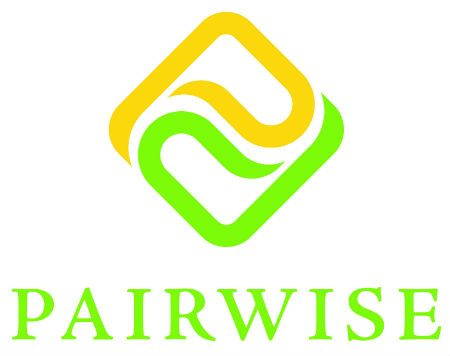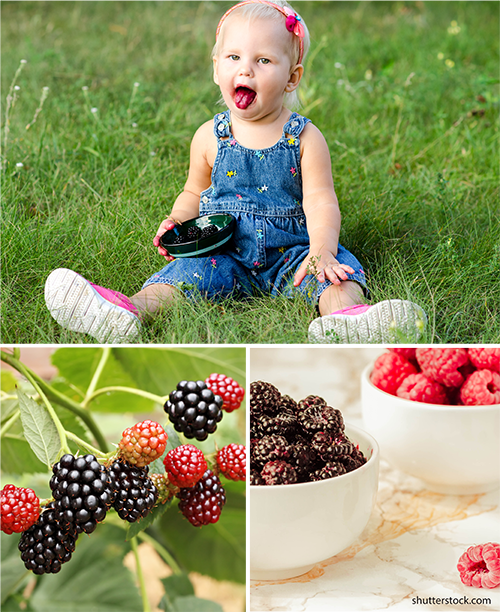
Pairwise, NCSU Seek Genes That Determine the Berry Best

Humans have been on a quest for the best possible berries since we emerged as hunter-gatherers.
In more recent centuries, growers have tried to cultivate ideal varieties for traits such as taste, resistance to drought and disease, a longer shelf life and even to eliminate thorns from the stems for easier harvesting.
Now Research Triangle Park-based plant genomics startup Pairwise and North Carolina State University are collaborating in a unique public-private partnership to vastly accelerate that process. The new “food group” includes the U.S. Department of Agriculture’s Corvallis, Ore., station, the California-based company Plant Sciences, Inc., the University of Arkansas, and Cornell University
Their study will include two years of field testing with more than 300 unique species and accessions of Rubus to identify and characterize their genetic diversity. Rubus is the large, diverse genus of flowering plants in the rose family that includes blackberries, raspberries, black raspberries and others which have woody stems with thorns. They are called “caneberries” because they grow on woody stems called canes. Accessions are related plant materials collected from the same species and location. Collection of them is an attempt to capture the diversity of a specific population of plants.

The goal of the study is to determine how the natural genetic diversity of wild and domesticated varieties can improve breeding outcomes, and how gene editing can work as a tool to bring new and better berries to both consumers and growers.
In the end, they will share their data publicly – info on whole genomes, resequencing and phenotyping (observable physical traits) for all public lines, to enable additional study by other researchers and to accelerate applications for breeding.
“We founded Pairwise with the idea that there’s so much more for this technology [gene editing] to do than just work on the traditional technology crops, like corn and soybeans,” said Tom Adams, Ph.D., CEO of Pairwise and former vice president for global biotechnology at Monsanto. “There’s really a problem to address, which is getting healthy food to people.”
“Less than 20% of people in the U.S. eat the recommended amount of fruit and vegetables a day,” he added. “We think part of that is the convenience and the availability of fruits and vegetables that are attractive, and this is a technology that can help that. We really have a mission to drive up consumption of fruits and vegetables through improvements of the crops and making them more available to people.”
This study focuses on varieties of caneberries destined for fresh consumption, as opposed to berries raised for processing into jams, jellies and other food products, added Ryan Rapp, Ph.D., Pairwise head of product discovery.
An "enormous pool of natural variation"
“We think there is an enormous pool of natural variation that consumers haven’t experienced,” said Adams.
This process of identifying which genes are associated with which traits and then using gene editing tools to breed the best berry is not the same as developing genetically modified, or GMO, berries, emphasized Adams.
“We are accelerating what a traditional breeding program would do,” said Adams, not introducing any genes from a different organism to the plants, which is what occurs in GMOs.
Funding for Pairwise to work on this study comes from a $25 million Series A funding round the company closed last year, said Rapp. PSI is also co-funding the study in terms of collection of plant materials, propagation, phenotyping and running the trial in California. The purpose of collaborating with researchers at the universities is to both tap into their expertise as well as share data with them for continued research within the academic community.
The researchers from NCSU include Gina Fernandez, Ph.D., professor of horticultural science and leader of the strawberry, raspberry and blackberry breeding program for the state of North Carolina. She has statewide Extension responsibilities for blackberries and raspberries. Also involved is Hamid Ashrafi, Ph.D., assistant professor of horticultural science, who specializes in plant genetics. Ashrafi will perform bioinformatics for the project.
“The Rubus community is a very close community and we’ve always shared data, and we’ve always worked together well,” said Fernandez. She noted that the University of Arkansas researcher, Margaret Worthington, Ph.D., assistant professor of fruit breeding and genetics, earned her doctorate at NCSU.
Fernandez’s team will plant five genotypes of caneberries – two raspberries, two blackberries and a black raspberry – at the Piedmont Research Station in the Rowan County community of Salisbury. Researchers at the other universities will plant the same five in their locations. Over two seasons, they will each collect identical phenotype data such as time of first bloom, color, presence and location of thorns, cane color, fruit size, etc. about the plants in their respective locations. Meanwhile, Pairwise will collect and process genomic data that correlates with each phenotypical trait for these, along with similar data on another 300 of the approximately 700 total types of Rubus. The resulting large data set will enable extensive statistical analysis.
“This is unprecedented that Pairwise [a private company] is going to generate all this genomic data and share it with us,” said Fernandez.
About Pairwise
The company formed in March 2018. In addition to CEO Adams, Haven Baker, Ph.D., is chief business officer. Other founders are: Feng Zhang, Ph.D., a member of the Broad Institute of MIT and Harvard, an investigator at the McGovern Institute for Brain Research at MIT, and the James and Patricia Poitras Professor in Neuroscience at MIT and developer of the CRISPER-Cas9 system for gene editing in eukaroyic cells; David Liu, M.D., Ph.D., a professor of chemistry and chemical biology at Harvard, faculty member of the Broad Institute and a Howard Hughes Medical Institute investigator; and J. Keith Joung, M.D., Ph.D., associate chief of pathology for research and the Jim and Ann Orr Research Scholar at Massachusetts General Hospital.
The company is finalizing a move this fall of its R&D employees and executives to a new headquarters space in Durham’s Golden Belt Campus, with about 15 to 20 of the company’s 85 employees remaining at its Research Triangle Park plant growth facilities.
Adams said Pairwise expects to hire an additional 10 employees this year and to increase its workforce by 10 to 15% over each of the next couple of years. He credited the North Carolina Biotechnology Center for assisting the company with its establishment in North Carolina and serving as a resource for establishing a collaborative network in the region.
